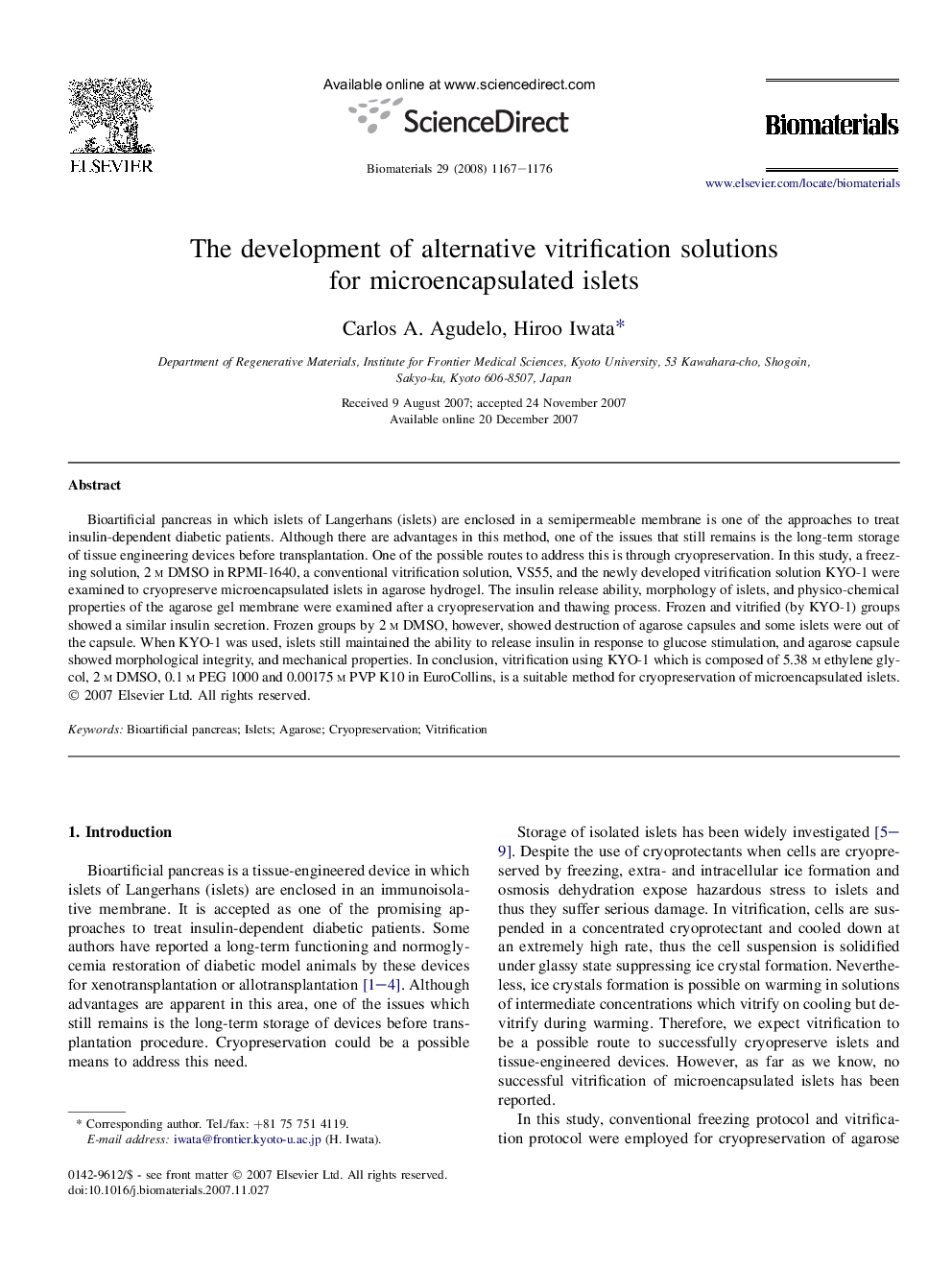| Article ID | Journal | Published Year | Pages | File Type |
|---|---|---|---|---|
| 9791 | Biomaterials | 2008 | 10 Pages |
Bioartificial pancreas in which islets of Langerhans (islets) are enclosed in a semipermeable membrane is one of the approaches to treat insulin-dependent diabetic patients. Although there are advantages in this method, one of the issues that still remains is the long-term storage of tissue engineering devices before transplantation. One of the possible routes to address this is through cryopreservation. In this study, a freezing solution, 2 m DMSO in RPMI-1640, a conventional vitrification solution, VS55, and the newly developed vitrification solution KYO-1 were examined to cryopreserve microencapsulated islets in agarose hydrogel. The insulin release ability, morphology of islets, and physico-chemical properties of the agarose gel membrane were examined after a cryopreservation and thawing process. Frozen and vitrified (by KYO-1) groups showed a similar insulin secretion. Frozen groups by 2 m DMSO, however, showed destruction of agarose capsules and some islets were out of the capsule. When KYO-1 was used, islets still maintained the ability to release insulin in response to glucose stimulation, and agarose capsule showed morphological integrity, and mechanical properties. In conclusion, vitrification using KYO-1 which is composed of 5.38 m ethylene glycol, 2 m DMSO, 0.1 m PEG 1000 and 0.00175 m PVP K10 in EuroCollins, is a suitable method for cryopreservation of microencapsulated islets.
